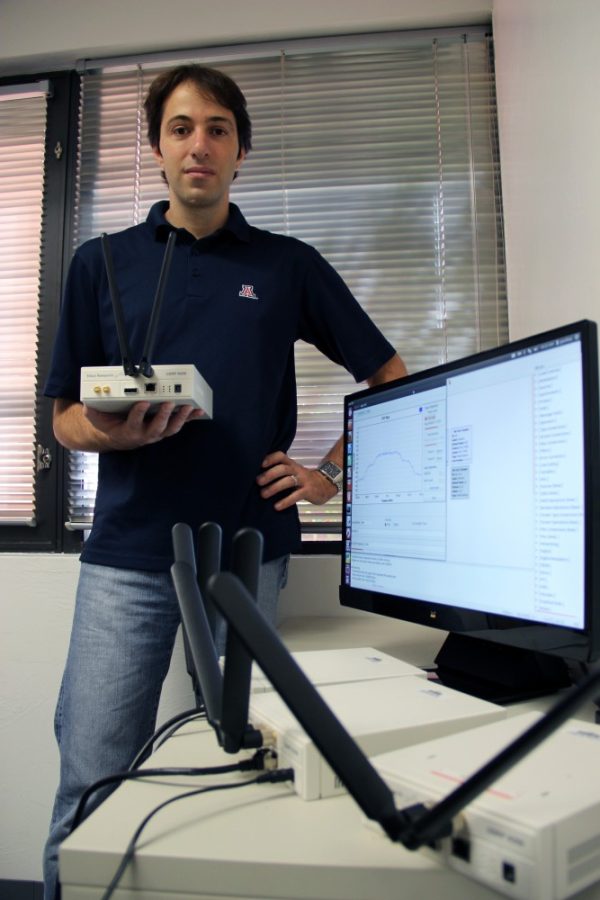The future of wireless technology will be shaped by a UA-headed team of academic and industry leaders.
Five universities and 20 tech-related companies are partnering for research under the name Broadband Wireless Access and Applications Center, which will receive $1.6 million in the next five years from the National Science Foundation, as well as industry support of $4 million.
“We’re working on technologies for the next generation of wireless systems that will have faster data rates and more flexible communications systems,” said Tamal Bose, professor and head of the department of electrical and computer engineering and director of BWAC, which received its initial funding in July.
The UA team, along with those at institutions such as Virginia Tech and Notre Dame, will work to expand the range of wireless access, speed up data rates and eventually develop a technology capable of choosing the most efficient channels for data transmission. In addition to communications, the wireless technologies will also impact the fields of healthcare, transportation and national security, Bose said.
With the demand for data doubling every year, Bose said that the center is looking for ways to speed up the transmission of data through the finite number of available bandwidths, which are the different frequencies used to channel digital information through the air.
Bose compared the channels to a busy highway system on which traffic is doubling every year. In the analogy, one possible solution is to raise the speed limit.
“We’re trying to move data through the same channels in the same spectrum, much faster,” Bose said.
Another way to increase efficiency is to divert some of that traffic onto paths that aren’t as congested, which in the wireless realm is called spectrum sharing.
The Federal Communications Commission controls the licensing of sections of the electromagnetic spectrum for use by radio, television and internet providers, said Marwan Krunz, a professor in the UA department of electrical and computer engineering and co-director of BWAC. Most of the usable spectrum is already occupied by various entities, he said.
The people at BWAC hope to work with the FCC to free up some of those private channels for public use, according to Krunz.
“[Spectrum sharing] would allow you to use a spectrum that has in the past been given to TV broadcasters … for wireless access,” Krunz said.
This means that if one channel gets backed up, the technology could theoretically select a pathway with less traffic.
Haris Volos, research assistant professor in the department of electrical and computer engineering, will be working to develop a “cognitive” device that can decide which channels to use, a point of emphasis for the UA site.
Aside from increasing data rates, the technology would also help conserve battery power since the wireless device would not be exhausting itself downloading data through an inefficient channel, Volos said.
Bose envisions a world in which massive wireless networks make it possible for isolated rural communities to surf the web with the same speed and efficiency as urban dwellers, and wireless hospital equipment and smart cars afford people the utmost convenience and connectivity.
“It would be mind-blowing to be able to say that the way my cell phone works has something to do with [research] I did in college,” said Garrett Vanhoy, a graduate student in the department of electrical and computer engineering. “It’s kind of awesome.”









